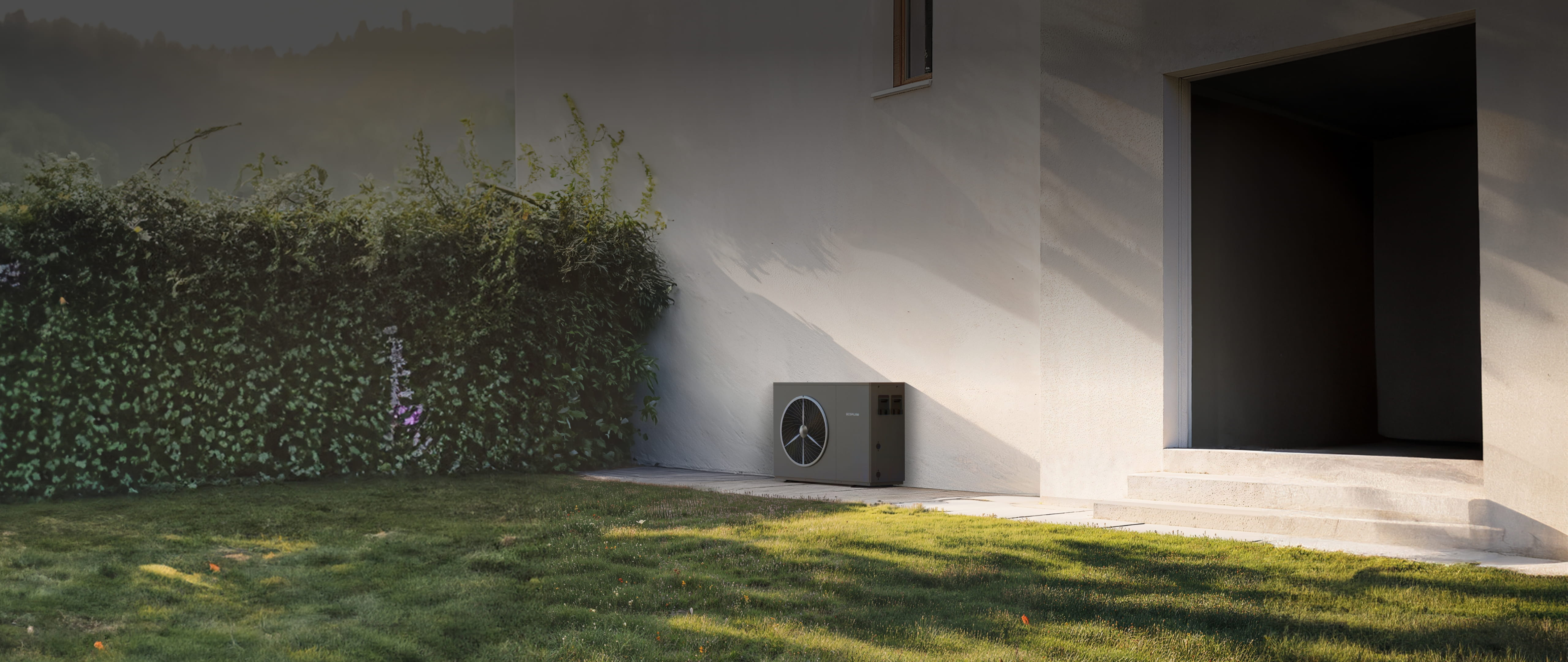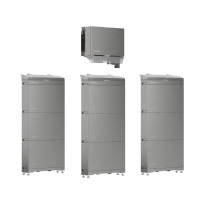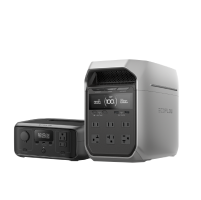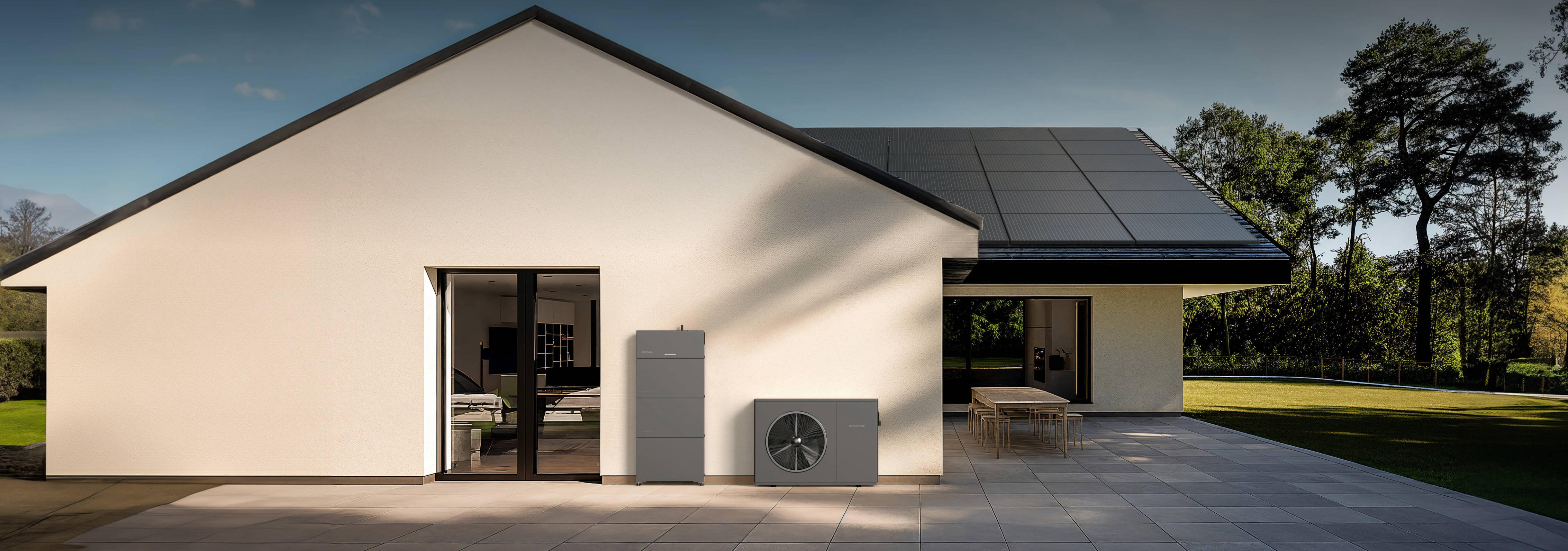Winterising Your Air Source Heat Pump with the Right Heat Pump Cover
Using a heat pump cover may seem like a nifty trick to protect your system in the winter, but its benefits are more limited than many homeowners expect. For modern heat pumps like EcoFlow PowerHeat, where design engineering is applied, the need for external protections like heat covers is reduced.
Do You Need a Heat Pump Cover?
Many people consider using heat pump covers to protect their unit from dust, leaves, and weather elements like snow or rain. While the idea sounds practical, it only works if the cover design allows for proper airflow.
Fully enclosing a heat pump can actually damage the unit instead of protecting it. This can block ventilation, trap moisture or lead to icing issues that may void the warranty.
As mentioned, modern designs, as seen in EcoFlow PowerHeat, do not need external coverings. That’s because it has a built-in protective design that can handle winter conditions fine.
An air-to-water heat pump, PowerHeat offers efficient solar-powered home heating that can also be integrated with EcoFlow PowerOcean to further enhance your heating and overall home energy system. With PowerOcean, homeowners can easily expand their storage and achieve more independence from the grid.
Heat Pump Covers: Airflow, Elevation and Drainage
When looking for heat pump covers UK suppliers offer, it’s worth choosing models that prioritise airflow and durability more than plain aesthetics. For example, selecting designs like slatted, louvred or mesh-style is good to let your system’s fans breathe.
Also, follow the manufacturer’s clearance requirements, typically around one metre at the fan discharge and adequate spacing on all sides. If the clearance is narrow and blocked, it can lead to exhaust air re-entrainment and system efficiency loss.
Elevation and Drainage Matter in Winter
For heat pumps, elevation and drainage are important, especially in winter. If using an air source heat pump cover, it would work best if your system is raised from the ground with stands or brackets.
Drainage is also essential as condensate should flow freely into a gulley or soakaway, rather than on paths where it can solidify and form sheet ice, which can be slippery for pedestrians. Planning for elevation and drainage can protect your heat pump and avoid accidents.
Shelter From Above, Not All Around
If you box the unit on its sides, airflow might be affected, especially if the heat pump cover isn’t breathable. When airflow is blocked, it may lead to more issues in the long run.
So it’s best to go vertical in terms of cover positioning: think snow hoods, roof canopies, or even simple awnings. These actually give effective, and often better protection from rain, roof drips, and sliding snow while still allowing for free air circulation than covers.
This won’t be a problem with EcoFlow’s PowerHeat as it already has a sturdy casing, thoughtful airflow engineering, and built-in safety features compliant with industry standards. Practically speaking, this means less need for covers.
Beyond Heat Pump Covers: Smart Home Heating Solutions
Covers once played a very important role in protecting outdoor units. Nowadays, older heat pumps are gradually getting replaced by modern ones; the need for a heat pump cover is also being minimised.
EcoFlow’s PowerHeat, a modern air source heat pump, can integrate with smart energy management systems. This allows it to communicate with your wider home ecosystem and connect seamlessly with other devices like PV systems, battery storage systems, and even smart water heating solutions such as PowerGlow.
Instead of depending on physical protection like covers, these systems can use intelligently designed digital tools, giving you the ability to optimise heating schedules, reduce energy waste, and maintain your home’s comfort.
The reality is that even the best air source heat pump cover won’t be able to offer the same protection that PowerHeat flaunts. So, homeowners who want to future-proof their heating systems should redirect their focus to investing in smart heating solutions instead of heat pump covers.

Heat Pump Covers UK: Noise and UK Compliance Rules
When shopping for covers, homeowners also need to consider noise levels. Not many know or realise that adding screens or coverings can change how sound travels, which sometimes amplifies the noise of the outdoor unit instead of reducing it.
Since coverings can alter sound levels and the perceived loudness of the outdoor unit, it’s best to follow UK Permitted Development rights, which originally require heat pumps to comply with MCS 020(a) noise assessment standards.
An update last May 2025 meant a retightening and recalibration of this requirement, now lowering the noise limit to 37 dB(A) LAeq,5min at the neighbour’s boundary. With this in mind, careful planning is important if you intend to add a heat pump cover to your unit.
What kind of product or solution are you interested in?


Simple Winter Maintenance Checklist
You can use this simple winter maintenance checklist for your air source heat pump cover and system to ensure reliable operation for years:
Clear potentially obstructing debris like snow, leaves, and dust regularly.
Never chip or puncture ice directly off the coils, as doing so could damage them. Use defrost settings instead.
Lag any exposed pipes to prevent them from freezing over.
Schedule an annual servicing with certified professionals to help ensure your system is smooth and efficient.
If using heat pump covers for extra protection, ensure you only use breathable ones to avoid blocking airflow and ventilation.
These simple steps can keep your system protected and efficient during its most demanding usage period.
Heat Pump Covers Might Not Be As Essential As You Think
A well-thought-out heat pump cover can indeed provide a degree of protection, but poorly designed ones often start more problems than they solve. You should prioritise good airflow and ventilation, space clearance, drainage clearance, and compliance with UK noise regulations.
Thanks to smart heating solutions like PowerHeat, the reliance of heat pumps on external coverings is essentially decreasing. Now, modern units can easily handle winter conditions without any effect on the unit’s efficiency.
With this capability, you can opt for a simple canopy or ventilation screen for most UK homes. Schedule a free consultation today and find out more about your home’s overall energy ecosystem, including how you can efficiently utilise your heat pumps all year round.
FAQ
1. Do I need a heat pump cover in winter?
A heat pump cover can protect traditional heat pumps against debris and elements that winter brings. But many modern heat pumps, such as EcoFlow’s PowerHeat, are already engineered to be winter-resistant, so covers may not be necessary.
2. Can a heat pump cover reduce noise?
Not necessarily, but a well-designed one can help reduce noise levels. However, apart from acoustics, ensure the cover maintains the airflow and ventilation of your outdoor unit. Airflow obstruction can be damaging to your heat pump if not fixed.
3. How can I maintain my heat pump in winter?
You can maintain it by keeping it clear of debris, snow, leaves, and dust. Also, remember not to chip ice off the coils; instead, use the default defrost settings. Keep in mind the importance of lagging exposed pipes and booking annual servicing.



